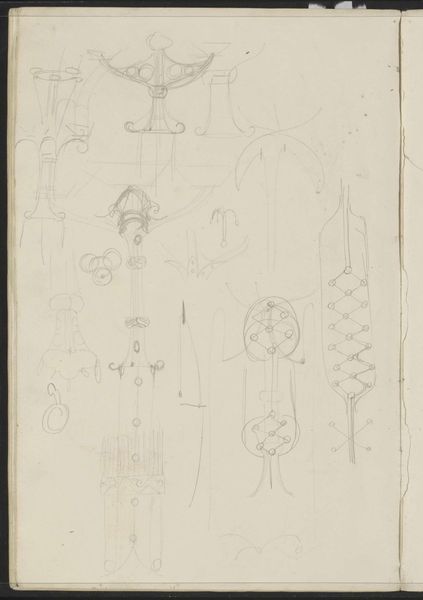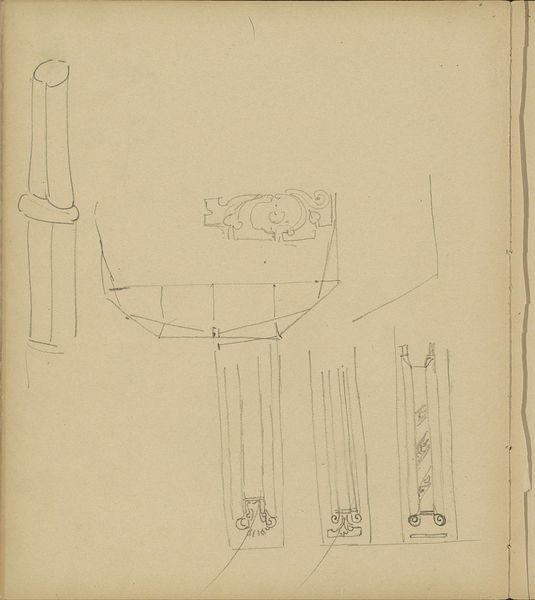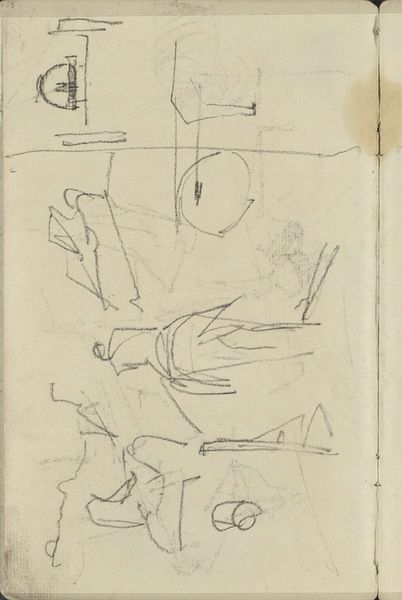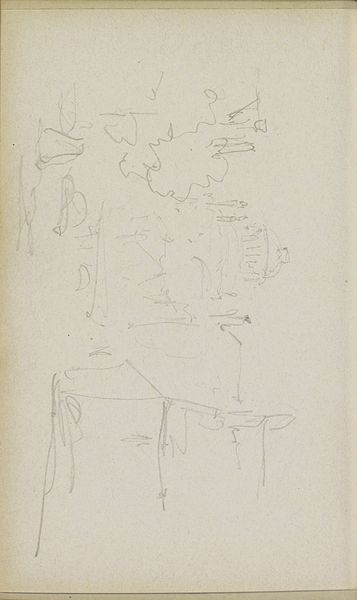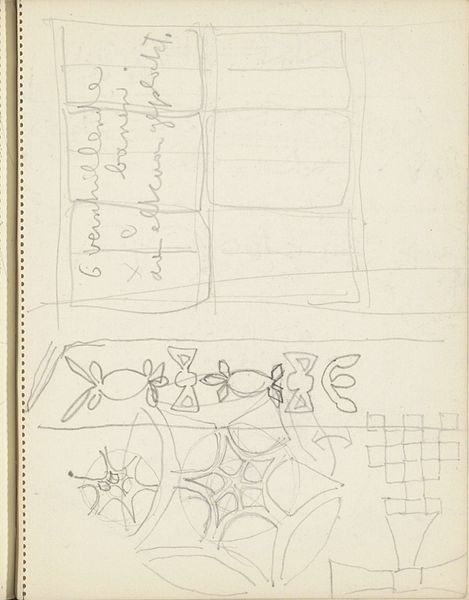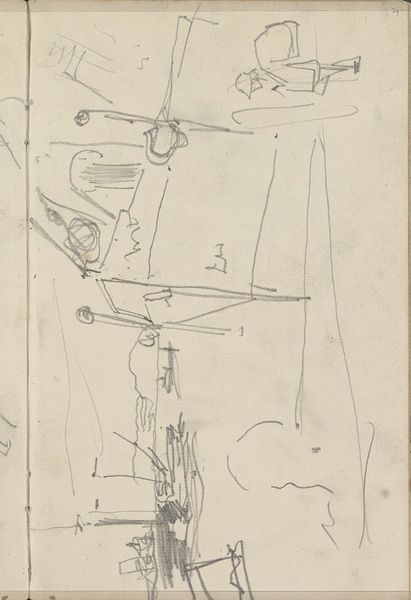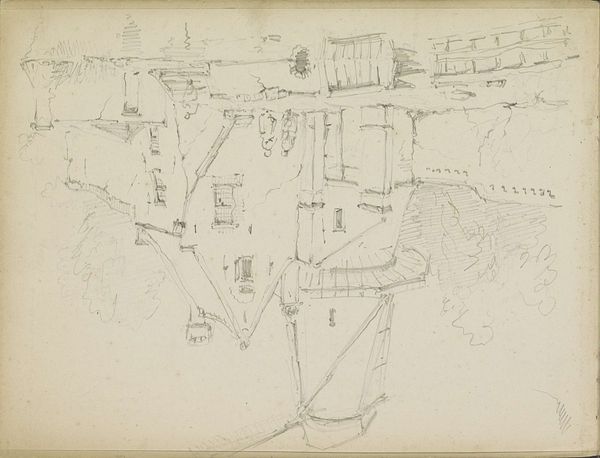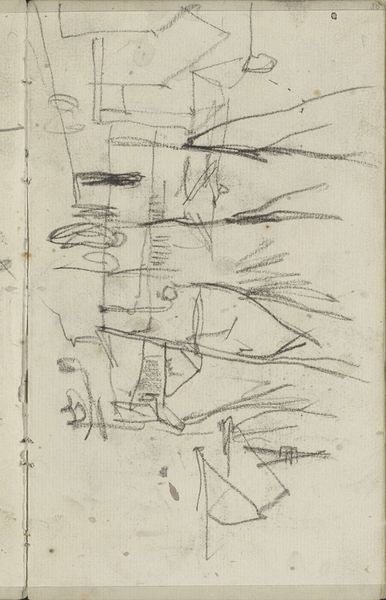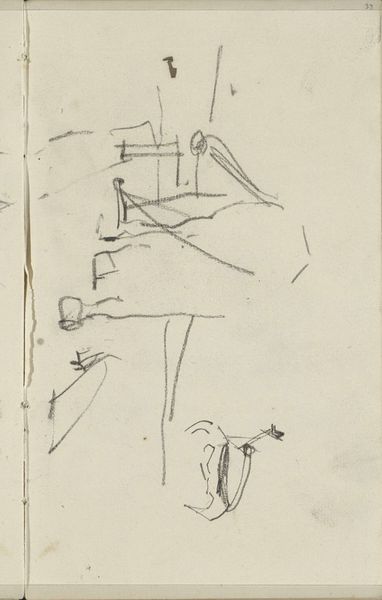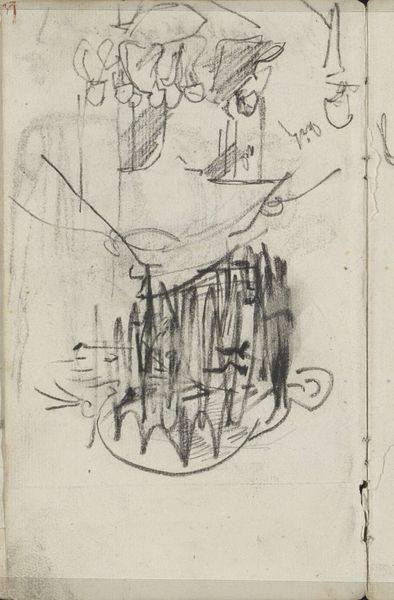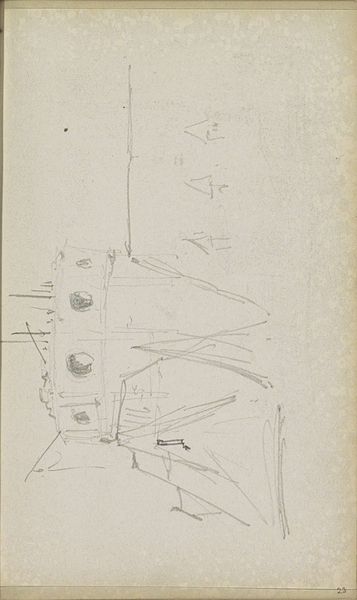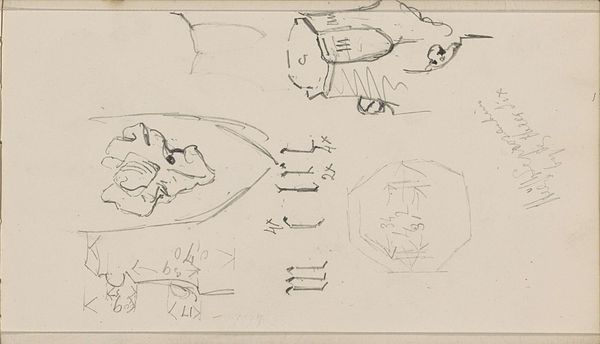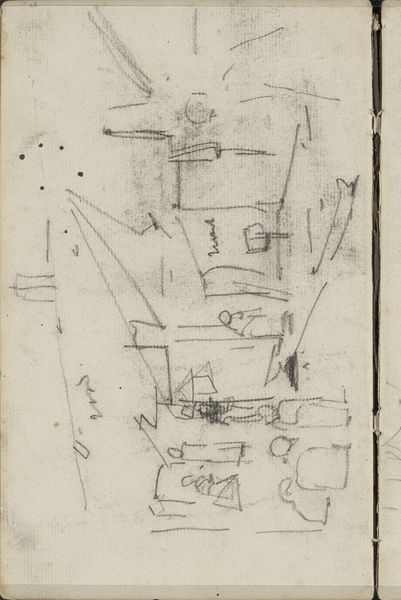
drawing, paper, pencil, graphite
#
drawing
#
table
#
furniture
#
paper
#
form
#
pencil
#
graphite
Copyright: Rijks Museum: Open Domain
Editor: This is "Leunstoelen en salontafels," or "Armchairs and coffee tables," a pencil and graphite drawing on paper by Carel Adolph Lion Cachet from around 1897-1898. It's essentially a sketch of furniture. What catches my eye is the artist's focus, not on finished products, but on the initial designs and material considerations. What stands out to you in this work? Curator: I’m immediately drawn to the inherent labor suggested by these sketches. It showcases the preliminary stages of design and craftsmanship, reminding us of the hours of planning and construction required for each piece of furniture. Consider the social context of this work, these were objects of bourgeois comfort and leisure. The drawing itself becomes a document of class and production. What materials are implied? Editor: The drawings imply various textiles - velvet or leather perhaps, also different woods with intricate carving detail on the tables. It makes me wonder about accessibility to these objects, considering the detailed and seemingly expensive nature of the furnishings. Curator: Exactly! Now, consider Lion Cachet’s own position. Was he a craftsman himself? An industrial designer? His own social standing would directly affect his approach and perspective. Also, the choice of pencil and graphite - what does the reproductive capacity of drawing as a medium tell us? How would that impact the object's social circulation in comparison with other luxury materials? Editor: It suggests preliminary ideas, like something easily shared amongst a design or workshop team before committing to final forms. Perhaps more readily accessible or mutable. I see it becoming less about individual artistry and more about industrial design practices emerging in the late 19th century. Curator: Precisely. And what might that shift in production methods suggest? Editor: That's fascinating - it changes my perspective entirely, looking beyond just the aesthetics to understand production processes of design objects in society at large. Curator: It encourages us to appreciate not only the aesthetic value but also the socio-economic framework that dictates artistic creation and its consumption.
Comments
No comments
Be the first to comment and join the conversation on the ultimate creative platform.
